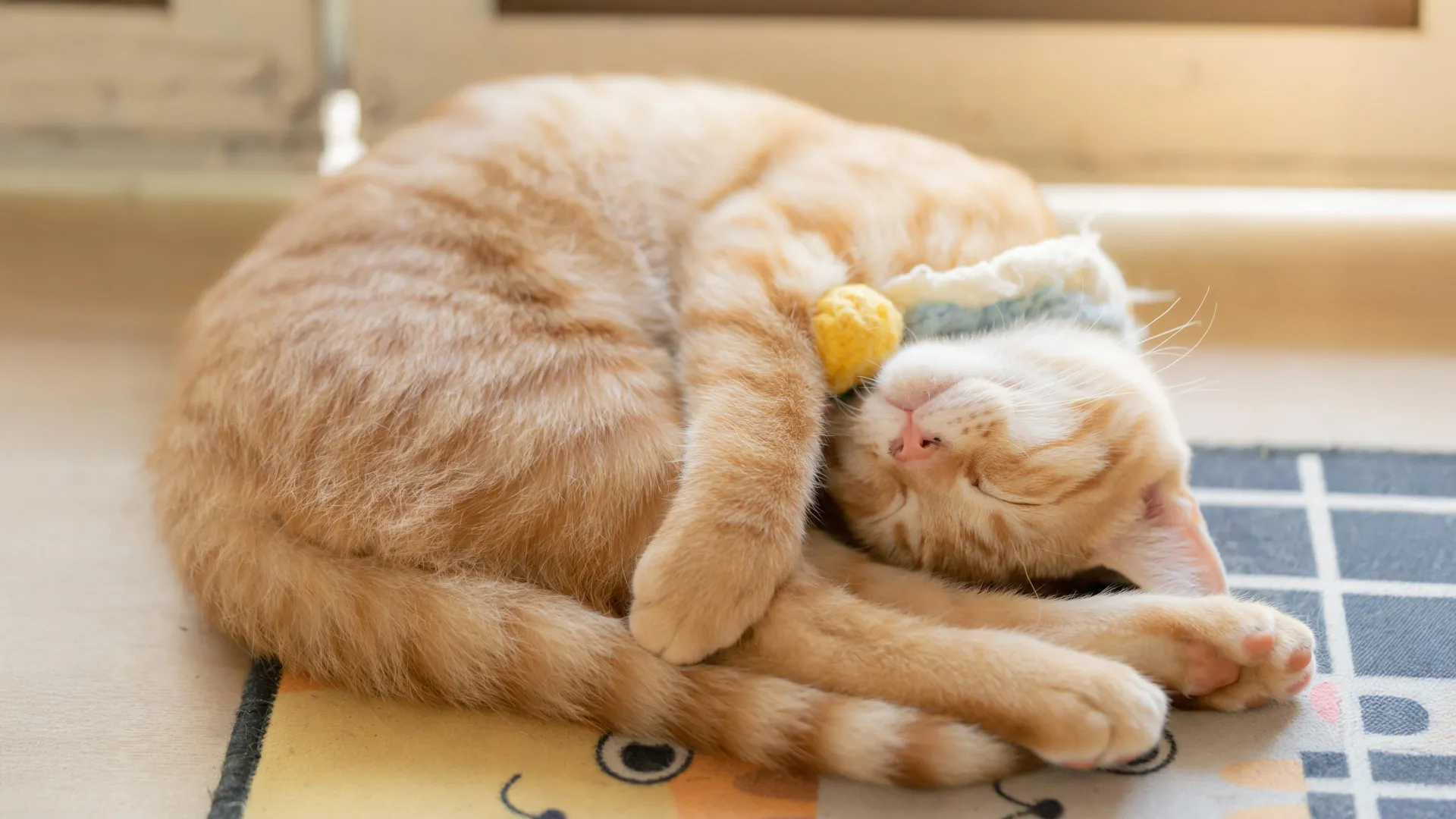Why cats prefer sleeping on their left side—and how it might help them survive
- Date:
- June 26, 2025
- Source:
- Ruhr-University Bochum
- Summary:
- Cats overwhelmingly choose to sleep on their left side, a habit researchers say could be tied to survival. This sleep position activates the brain’s right hemisphere upon waking, perfect for detecting danger and reacting swiftly. Left-side snoozing may be more than a preference; it might be evolution’s secret trick.
- Share:

Cats prefer to sleep on their left side. This is the conclusion drawn by an international research team that analyzed several hundred YouTube videos of sleeping cats. The researchers see this bias as an evolutionary advantage because it favors hunting and escape behavior after waking up. The team from the University of Bari Aldo Moro (Italy), Ruhr University Bochum, Medical School Hamburg and other partners in Germany, Canada, Switzerland and Turkey report on the study in the journal Current Biology, published online on June 23, 2025.
All animals are particularly vulnerable while sleeping. Cats sleep around 12 to 16 hours a day, preferably in elevated places where their predators can only access them from below. The research team around Dr. Sevim Isparta from the Animal Physiology and Behaviour Research Unit in Bari and Professor Onur Güntürkün from the Bochum working group Biopsychology wanted to find out whether cats prefer to sleep on one side or the other. "Asymmetries in behavior can have advantages because both hemispheres of the brain specialize in different tasks," says Onur Güntürkün.
Perceiving dangers with the left visual field brings advantages
The group analyzed 408 publicly available YouTube videos in which a single cat was clearly visible with its entire body sleeping on one side for at least ten seconds. Only original videos were used; modified or flipped material was excluded from the study. Two thirds of the videos showed cats sleeping on their left side.
The explanation: Cats that sleep on their left side perceive their surroundings upon awakening with their left visual field, which is processed in the right hemisphere of the brain. This hemisphere is specialized in spatial awareness, the processing of threats and the coordination of rapid escape movements. If a cat sleeps on its left shoulder and wakes up, visual information about predators or prey goes directly to the right hemisphere of the brain, which is best in processing them. "Sleeping on the left side can therefore be a survival strategy," the researchers conclude.
Cooperation partners
- University of Bari Aldo Moro (Italy)
- Ruhr University Bochum (Germany)
- Medical School Hamburg (Germany)
- Research Institute for Farm Animal Biology (Germany)
- University of Prince Edward Island (Canada)
- Kafkas University (Turkey)
- Federal Food Safety and Veterinary Office (Switzerland)
Story Source:
Materials provided by Ruhr-University Bochum. Note: Content may be edited for style and length.
Journal Reference:
- Sevim Isparta, Sebastian Ocklenburg, Marcello Siniscalchi, Charlotte Goursot, Catherine L. Ryan, Tracy A. Doucette, Patrick R. Reinhardt, Reghan Gosse, Özge Şebnem Çıldır, Serenella d’Ingeo, Nadja Freund, Onur Güntürkün, Yasemin Salgirli Demirbas. Lateralized sleeping positions in domestic cats. Current Biology, 2025; 35 (12): R597 DOI: 10.1016/j.cub.2025.04.043
Cite This Page: